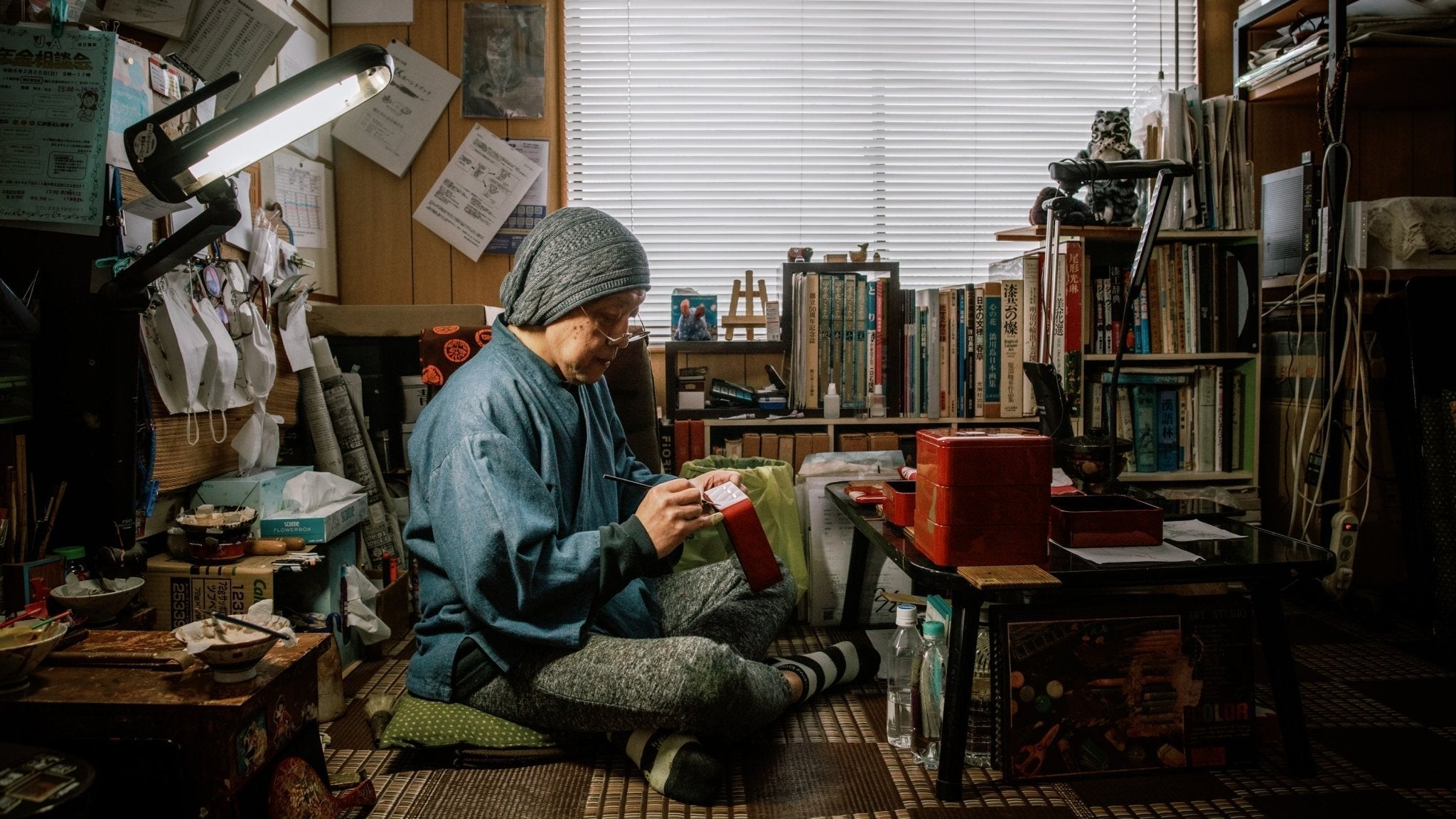
Brush Strokes of Tradition: The Maki-e Mastery of Morita Masatoshi
In the heart of Japan's Echizen lacquerware region (Fukui Prefecture), amidst a tradition that stretches back over 1,500 years, resides an artisan whose life's work has been dedicated to the ancient craft of maki-e. This traditional Japanese technique, where intricate designs are created using lacquer and then sprinkled with gold, silver, and platinum powder, remains an emblem to the country's rich cultural heritage. Morita Masatoshi, having been enchanted by this craft nearly five decades ago, continues to pioneer its evolution while remaining deeply rooted in its storied past.
tables of contents
From Manga Dreams to Maki-e Mastery

Morita's journey into the world of maki-e was unexpected, beginning in his youth when he aspired to become a manga artist. His path took a pivotal turn due to a chance encounter with the art of maki-e. He was captivated by a natsume matcha container, elegantly adorned with a maki-e goldfish design.
"Seeing that goldfish drawn with such precision and elegance, I knew this was something extraordinary,"
Morita recalls, reflecting on the moment that changed the course of his life.
The Choice of the Gourd Motif

Jubako: The Tiered Food Box Project

The transition from bowls to a tiered food box posed unique challenges, particularly in maintaining the beauty and balance of the design across different forms.


"Adapting a design initially used on the curved surface of a bowl to the flat and three-dimensional shape of a box required careful consideration of positioning and balance."
Beyond Mere Replication
Morita's work is deeply intuitive, drawing not just from years of experience but also from a keen sensitivity to the natural world and a broad appreciation for artistic expression across genres. He shares with us a philosophical approach to his craft that goes beyond mere replication.

"Because the background is black lacquer, drawing an objectively accurate motif doesn't necessarily mean it would be beautiful. Instead, I focus on capturing the breath and movement of the plants."
An intuitive sense of creativity, his brush moves as if by its own accord. This innate ability, often referred to as the craftsperson's intuition or sensibility, is the culmination of years of dedicated and sincere work in the traditional art of maki-e.
Morita continuously seeks inspiration beyond the confines of his craft, drawing from a broad spectrum of artistic expressions found in museums and in media like movies, anime, and manga, to prevent his sensibility from becoming too insular.
This practice of keeping an open mind and not overly adhering to one's preferences ensures that his maki-e work remains vibrant, innovative, and reflective of a wide array of influences.
Maki-e in Modern Contexts
This diversification demonstrates maki-e's versatility and its potential to transcend traditional boundaries. "I want to continue drawing maki-e that pleases those who commission and use them," Morita states, emphasizing his openness to exploring new possibilities.

Morita's nearly half-century-long journey through the world of maki-e mirrors the evolving story of this traditional art form. From a young boy dreaming of becoming a manga artist to a revered maki-e artisan, his work embodies a profound connection to Japanese cultural traditions while simultaneously embracing the potential for innovation and growth. Through his hands, the timeless art of maki-e continues to flourish, bridging past and future, tradition and innovation.







Leave a comment
This site is protected by hCaptcha and the hCaptcha Privacy Policy and Terms of Service apply.